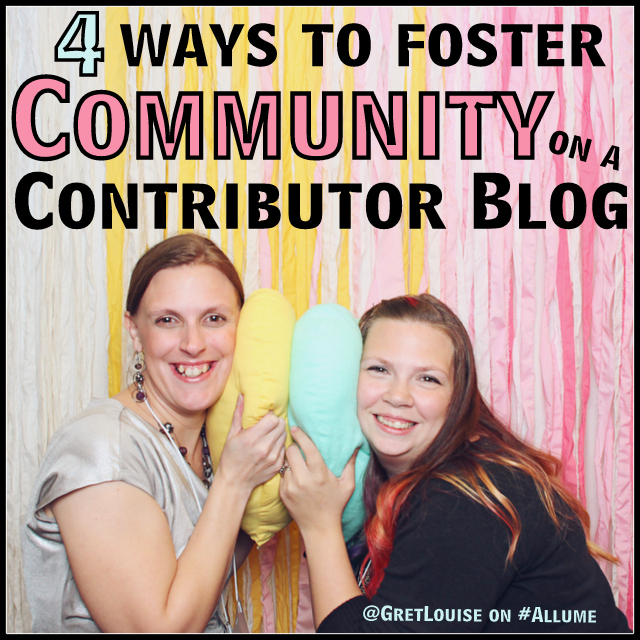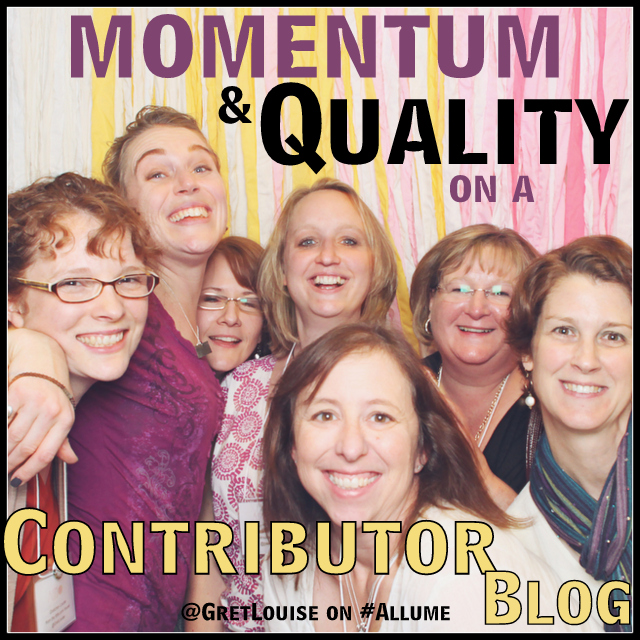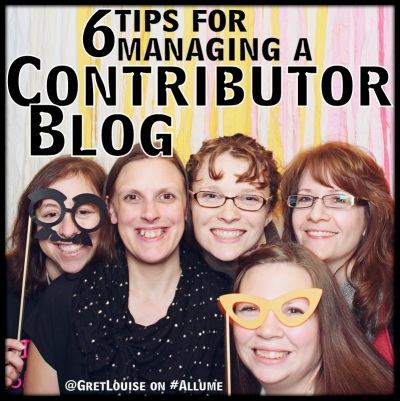One of the most beautiful thing about contributor blogs is the community found therein. But sometimes, especially if you’ve been managing the blog awhile, the community can begin to feel stymied and in need of being revived. Here are a few ways I’ve used to help foster (and revive!) the community on a contributor blog.

1. Make community the central goal.
It’s easy to think that once we’ve scheduled great quality posts, we’ve done our job. And if we were only publishing a magazine, maybe we would be done. But blogging has unlimited potential for building community in and around those posts, if only we can tap into it!
“The community surrounding your blog is what gives it life.”
-Christin Slade in Blog at Home Mom
In the comments.
I don’t expect any blogger to respond to every comment on every post, but it is nice — especially on a contributor blog — when the post author is interacting within the comment section on their post. Work with your contributors on the post scheduling date if necessary, to make sure they are around to promote their post and reply to the comments to it. Then use plugins like Comment Reply Notification, Subscribe to Comments Reloaded, Jetpack, or the Disqus comment system to keep the conversation going.
Asking questions on social media.
Ann Voskamp’s Facebook page is a great example of people responding to simple questions on social media. Ann will give a simple “Joy Dare” for the day and the comments pour in as people count and celebrate their “1000 Gifts”.
With link-ups.
Link-ups are a great way to generate community among your readers, but only if a large percentage of your readers are bloggers! The Better Mom Mondays and Women Living Well Wednesdays are great examples of community link-ups. SheLoves Magazine calls their link-ups “synchroblogs” — I love the descriptiveness of that term!
During Twitter parties.
The #FMFParty is a great example of a community developing around a blog and link-up through a Twitter party! Each Thursday night Lisa-Jo Baker hangs out with people on Twitter for the hour before the Five-Minute Friday post topic is announced.
Through Twitter and Instagram hashtags.
The #Allume hashtag is one of my favorite places to hang out on Twitter. I love the community that’s available within a six-letter hashtag named for my favorite conference! On Instagram, #Togetherin10 brings together the busy moms in search of quick fashion ideas who read the Together in 10 blog.
2. Bring the contributors’ community into yours.
From their blog.
I’ve begun asking my contributors to publish a post on their own blog on the same day their post goes live, using a different title (for best SEO) and only a brief quote from their post, directing readers to the contributor blog to find the rest. Not only does that bring fresh readers to our blog, but it brings their own regular readers into the comment section.
From their social media.
When Ruth Schwenk mentioned in her Allume session on “Building a Successful Contributor Blog” that she asks her authors to mention their posts on social media two to three times the day their post is published, I realized that was something I’d never asked my writers to do. Sure, they did often share their posts, but it was okay for me to actually ask them to make sure to do so! Only about half of my team is on Twitter, so I’ve just begun asking them to promote their posts on their own favorite forms of social media. And it’s fun to watch the momentum build as their friends share the posts in turn as well.
3. Expand your horizons.
The contributor blog I manage is represented everywhere from Goodreads to Tumblr. When a contributor asks about Kindred Grace being on some new form of social media, I’ll usually answer: of course, if you’ll do it! I don’t know the first thing about Tumblr, but our resident Tumblr fan does a beautiful job with our Tumblr account and shares our posts within a community we might not otherwise have reached. And while I find Pinterest too time-consuming to hang out on, and too much to pay a VA for at this point, we’ve invited a few team members to contribute to our Pinterest boards to keep them active (after giving them clear guidelines, of course!).
Making the community a team effort has allowed us to expand our horizons without spreading ourselves too thin. Not only does delegating and crowdsourcing take the load off of the people in charge, but it frees them up to do the tasks that only they can do, while allowing each person on the team to focus on the areas that are truly their strengths.
4. Provide a method for contributor collaboration and brainstorming.
There’s nothing better than a unified contributor blog that feels like they are working together as a team. Their unity spills out into the entire readership, creating a firm sense of community. A private Facebook group or Google Plus community provides a great way for your contributors to collaborate and brainstorm — participation is not required, but there when they need it.
Private Facebook Groups
Everyone is on Facebook, even when they are supposed to be writing! When we started a private Facebook group for our writing team, it harnessed all that Facebook time and turned it into productive brainstorming sessions. The community within our team has really blossomed through the Facebook group. It has also allowed new members to be welcomed with open arms and get to know the rest of the contributors on a more personal basis.
Google Plus Hangouts
Google Plus Communities offer a lot more organization of discussion threads if you’d rather do your brainstorming somewhere quieter than Facebook. So far, I’ve only used Google Plus Communities for the purpose of organizing a Hangout. When you don’t live close enough to meet face to face over coffee, Google Plus is a great alternative (and you can each bring the coffee!).
Conference Calls
There are many free conference call options that allow you to hear each other’s voice, without any need for webcams or fast internet. As soon as we can figure out a time when most of our worldwide team will be awake, we’re going to have one. The key will be for everyone not to talk at once!
Don’t let group collaboration replace clear communication. Private social media groups might streamline communication with your writers, but they won’t replace regular email communication. Make sure you don’t leave your contributors out of the loop just because they don’t spend all their time on Facebook: send out an email at least once a month in plenty of time to remind them of the upcoming deadline and mention future month’s topics.
I’ve met many of my closest friends through the community that has grown within the contributor blog I manage. And my prayer is that our readers would experience that same friendly embrace each time they visit our contributor blog or one of our social media outlets.
What are your favorite ways to participate in a contributor blog community?
Thanks for sharing,
Gretchen Louise

 I found myself part of a contributor blog back before anyone really knew what blogs were, let alone contributor blogs! In the beginning, everyone had publishing permission and you never knew whether two posts would go up in a day or none in a week. The team at
I found myself part of a contributor blog back before anyone really knew what blogs were, let alone contributor blogs! In the beginning, everyone had publishing permission and you never knew whether two posts would go up in a day or none in a week. The team at